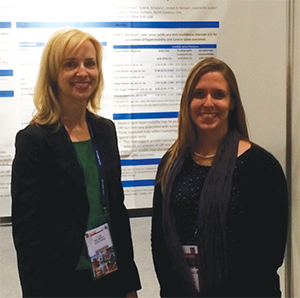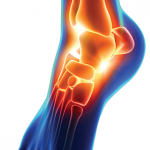
Rawpixel.com/shutterstock.com
This past June, Yvonne Golightly, PT, MS, PhD, helped launch an international group of researchers focused on foot and ankle osteoarthritis.
At the time, Dr. Golightly, an assistant professor in the department of epidemiology at the University of North Carolina (UNC), Chapel Hill, N.C., was attending the American College of Rheumatology (ACR)/European League Against Rheumatism (EULAR) Exchange Program in London. The Annual European Congress of Rheumatology gathers experts from the around the world to share clinical and research ideas, skills and knowledge within rheumatology.
What made this opportunity even more special for Dr. Golightly was that she was the first health professional—or non-rheumatologist—in the U.S. to be awarded travel and registration expenses by the ACR to attend the conference.
“I was alerted by a colleague about applying for this award,” she says, adding that eight other individuals from the U.S.—all rheumatologists—were also award recipients. “I looked at this as an opportunity to get to meet and collaborate with other researchers and clinicians who worked in arthritis in other parts of the world.”
International OA Working Group

Dr. Golightly
Dr. Golightly arrived several days early to allow time to travel to the University of Loughborough to meet with researchers from The Arthritis Research UK (United Kingdom) Centre for Sport, Exercise and Osteoarthritis, a consortium of seven British universities. The side trip was included in the award. Dr. Golightly says they began to develop a plan to combine their research and data sources to enhance universal knowledge of this field.
“By the end of the conference, we had developed an international foot and ankle osteoarthritis working group,” says Dr. Golightly, who is also a faculty member at the Thurston Arthritis Research Center, housed on the UNC campus. “Since then, we have moved forward with a couple of projects and are trying to grow this group. There are many researchers throughout the world who study the foot and ankle, such as those in Australia, whom we’d like to join our group.”
Part of the group’s value will be its growing collection of data on varying populations in different geographic regions. Although some of the research may parallel, complement or perhaps overlap each other, she says they are developing common ground on what will be studied and how it will be measured.

Dr. Golightly presents her work to a colleague, Dr. Alyssa Dufour, at EULAR.
Although she had previously emailed or skyped some of these researchers prior to the conference, she says meeting them in person somehow improved the dynamic of their working relationship.

